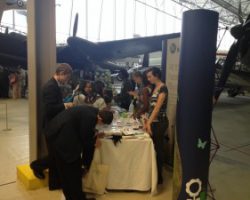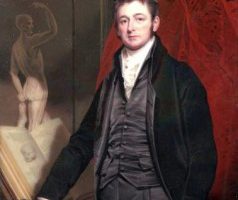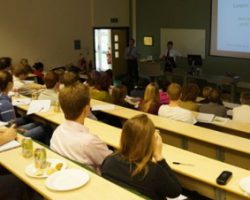
Planes, Post-it notes and dinosaurs
Natasha Neill, executive officer at the Society of Biology, writes about attending the Big Bang Fair Eastern on the 8th July 2014 at the Imperial War Museum in Duxford. Seeing (and hearing) amazing biplanes flying past you as you take a quick break from the front lines of public engagement is a pretty good way to spend a Tuesday lunchtime, and with the amazing venue of the Imperial War Museum at Duxford for this years Big Bang Eastern, it was a sight that all exhibitors, judges and guests got to enjoy. Armed with our inflatable dinosaur Trevor, we set off to Cambridge to share our passion for the history of biology with the 2000 attendees at the regional event for the Big Bang Fair. The Big Bang is the largest celebration of science, technology, engineering and maths for young people in the UK and everything is aimed at showing young people (primarily…


